2013 Ford Edge Review – Video

Right smack in the center of today’s crossover maelstrom are vehicles like the Nissan Murano and Toyota Venza; they’re the very definition of a “midsize” utility. But this segment is not exclusive to Japanese manufacturers; Ford offers a vehicle with features and utility to match.
FAST FACTS
| 1. With a base 285 hp, 3.5-liter V6, an optional 2.0L EcoBoost 4-cylinder makes 240 hp while a 3.7L V6 makes 305 hp. |
| 2. Four-cylinder models are available only as front-wheel drive. |
| 3. Fuel economy is a best of 21 MPG city and 30 MPG highway for 24 MPG combined while our AWD 3.5L V6 tester is rated 19/27 MPG or 22 MPG combined. |
| 4. Price for a base SE model starts at $28,595 including destination with our Limited test car at over 37 grand. |
The Edge should appeal to a broad swath of potential buyers, but is that enough? Is it a worthy competitor or merely a paper tiger?
A HISTORY OF INNOVATION
Since its introduction in late 2006 this Blue-Oval crossover has been something of an innovative product for the company. It was one of the first Fords to be powered by their then-new 3.5-liter Duratec V6 engine. Following a pretty substantial refresh in 2011 it was the first product to introduce customers to MyFord Touch, the company’s controversial infotainment technology. A year later the Edge received a big powertrain upgrade in the form of the brand-new 2.0-liter EcoBoost four-cylinder turbo, and guess what? It was one of the first vehicles to get this exciting engine.
THREE FOR THE ROAD
Get the Flash Player to see this player.
Three different powerplants are available to Edge customers. The volume unit is a 3.5-liter V6. With twin independent variable cam timing, Ti-VCT in Ford-speak, it delivers a class-competitive 285 horsepower with 253 lb-ft of torque. This engine loves to rev and surges ahead as the tachometer pointer hits about 5,000 RPM, sprinting to redline before the transmission grabs the next gear; a six-speed automatic is standard across the board.
The top engine is a larger version of this V6, displacing 3.7 liters. It’s essentially the same unit that sees duty in the Mustang and F-150. Under the Edge Sport’s hood it cranks out 305 horsepower with 280 units of twist.
The midrange powerplant is a 2.0-liter EcoBoost unit. It puts out 240 horsepower and 270 lb-ft of torque. Not surprisingly it’s the most fuel-efficient offering. It stickers at 21 miles per gallon city and 30 highway resulting in a combined score of 24 MPG, which is quite respectable for this class. Additionally, EcoBoosted Edges are only available with front-wheel drive; V6 buyers can opt for all-weather grip.
The limited model provided for evaluation was powered by a 3.5-liter V6 and featured two-wheel drive. Fuel economy for this version is 19 MPG city, 27 on the interstate. Combined it averages 22, a figure we managed to beat, albeit barely, topping it by a couple tenths of an MPG.
COCKPIT CONFIDENTIAL
The 2013 Ford Edge features an attractively understated cabin. The materials used are nice looking and pretty much everything is screwed together properly; fit and finish was better than the Toyota Venza we evaluated a few weeks ago.
The overall interior design is pleasantly straightforward, with no unnecessary swoops, angles or odd-looking design flourishes. It’s likely this cockpit will still look attractive in 10 years, unlike the Venza for instance, which is reminiscent of something out of a Picasso painting.
There are plenty of soft surfaces throughout the interior, including the dashboard and armrests, though curiously the tops of the door panels are constructed of hard plastic, seemingly to assault unsuspecting elbows.
As one might expect, the front chairs are comfortable and fully adjustable, but rear-seat passengers are also treated to generous accommodations. There’s plenty of legroom and the backrests can adjust to a wide array of angles for maximum comfort. If there’s anything to complain about it’s the lower cushion, which is a tad too low.
Even cargo has plenty of space to stretch out. The Edge delivers a maximum volume of about 69 cubic feet behind the front seats, which is a whisker less than the Venza and a couple cubes more than what the Murano can muster.
Making things easy, the second-row seats can be folded with the push of a button. A rocker switch mounted in the cargo area allows the backrests to drop, maximizing cargo space without requiring you to fumble with levers on either side of the vehicle.
STICK ‘N TWIST
Call me an automotive Luddite, but one thing I love about the Edge’s interior is the ignition. Eschewing modern push-button start our tester was equipped with an old-fashioned key that you stick into a slot and twist. Guess what? It works every single time and there’s no ambiguity. If you want to start the engine just turn the key all the way to the right; to shut it off simply do the opposite. It’s so simple! Push buttons push my buttons; long live the traditional key!
LOOKING’S FREE, TOUCHING’S GOING TO COST YOU
Dominating the center stack is the much-decried MyFord Touch system. Like my opinion of push-button ignitions I’m going to go against the grain here as well. MyFord Touch isn’t perfect, it can be a bit sluggish, but it’s far from the electronic death sentence others have made it out to be. My peers complain that it’s unresponsive, hard to operate and crashes like a drunk driver, but I’ve experienced NONE of these faults. That’s not to say others haven’t, but the system was trouble free during my week with the Edge. Perhaps Ford’s software updates are helping.
And here’s a little secret, spend an hour or so poking around the different screens and playing with the touch-sensitive buttons; you’ll figure it out. It ain’t that hard.
In addition to the main screen there are two small displays mounted in the instrument cluster, one on each side of the centrally mounted speedometer. These offer customizable views of various vehicle functions. The left screen handles things like the trip odometer, fuel-economy readout and tachometer. The right display is tailored to functions like climate control, navigation directions and entertainment options. Both are controlled via a pair of thumb-activated plus-pads on the steering wheel.
MyFord Touch is standard on Limited-trim models, though it’s part of a $2,000 options package available on SEL Edges, which are one step below. MyFord Touch is not available on entry-level SE variants.
When it comes to dollars and cents the most affordable Edge starts right around $29,000, including $895 in destination and delivery fees. The Limited model we tested clocked in at a gasp-inducing $37,125, which is quite a chunk of change for a blue-collar, Blue-Oval vehicle.
OUT AND ABOUT
The Ford Edge checks a lot of the right boxes. It’s stylish, offers a range of powerful engine options and it’s quite spacious inside. Overall it’s a very good crossover vehicle.
Our Limited test model’s 3.5-liter V6 delivers decent low-end grunt but as mentioned it really comes alive at the top of the rev range. Unfortunately though Ford’s Duratec engines aren’t the smoothest sixes around; they vibrate a little more than some of their competition. It’s not a big deal but comparable engines are slicker feeling.
Performance is aided by a six-speed gearbox that on paper is a great solution but in practice can be a little bit clunky; sometimes upshifts aren’t as smooth as they could be.
Drivers that want a little more control can manipulate the transmission via a shifter-mounted rocker switch. The SelectShfit automatic works well enough, you can rifle through the various ratios as necessary, though the shifter has to be all the way back in “S” mode for this to work. You won’t want to bother.
Other aspects of the Edge’s driving experience are decidedly average. The steering is duller than a rusty hammer and outward visibility is compromised slightly by fat-bottomed A-Pillars. To sum it all up this is a vehicle you mother would love.
THE VERDICT
So, after more than half a dozen years on the market has Ford’s Edge lost its edge or is it still an innovator for the company? Summing things up, it’s a capable crossover and a nice vehicle, but nothing more. If you’re looking for a utility it’ll definitely get the job done, but like a bowl of cornflakes there’s just not all that much to get excited about anymore.
LOVE IT
- Nicely appointed cabin
- Comfortable seating
- Ample cargo space
LEAVE IT
- Somewhat clunky transmission
- Uninspired driving dynamics
- Some engine vibration

Born and raised in metro Detroit, Craig was steeped in mechanics from childhood. He feels as much at home with a wrench or welding gun in his hand as he does behind the wheel or in front of a camera. Putting his Bachelor's Degree in Journalism to good use, he's always pumping out videos, reviews, and features for AutoGuide.com. When the workday is over, he can be found out driving his fully restored 1936 Ford V8 sedan. Craig has covered the automotive industry full time for more than 10 years and is a member of the Automotive Press Association (APA) and Midwest Automotive Media Association (MAMA).
More by Craig Cole
















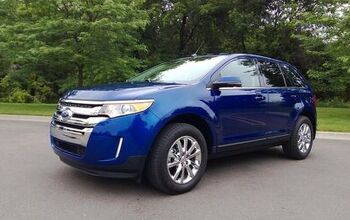




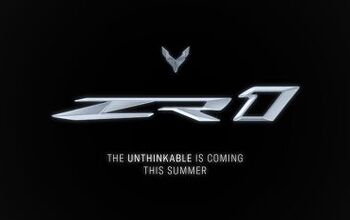
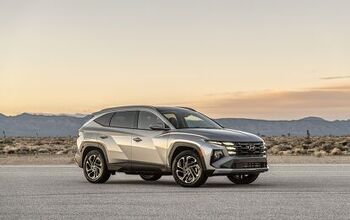
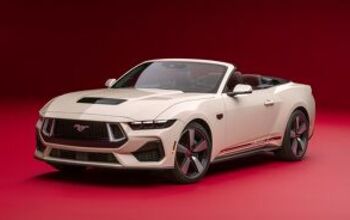
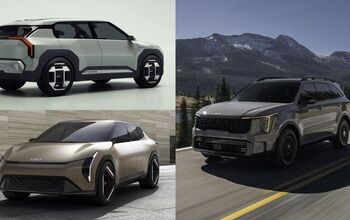
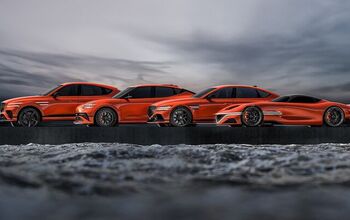





Comments
Join the conversation